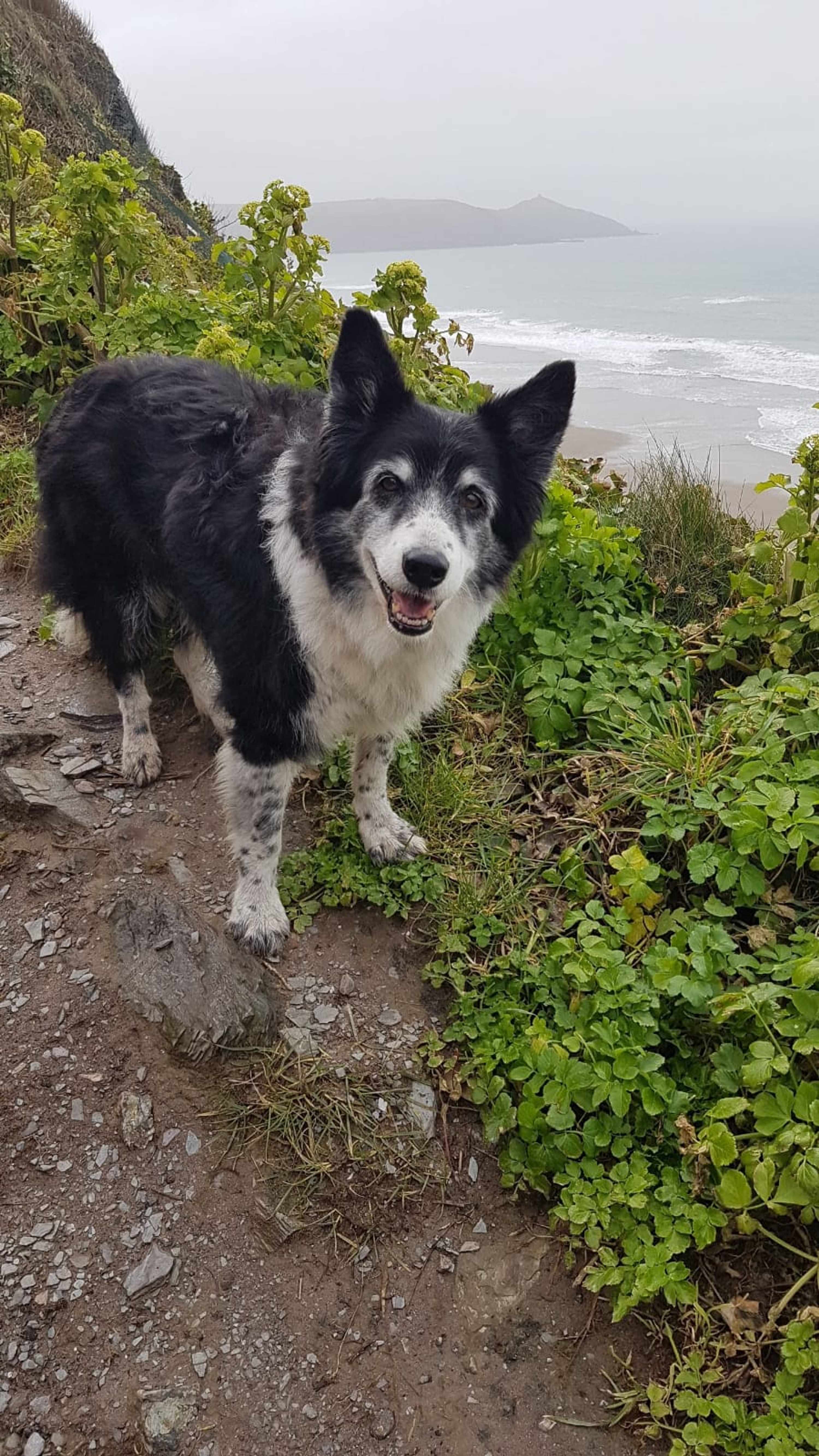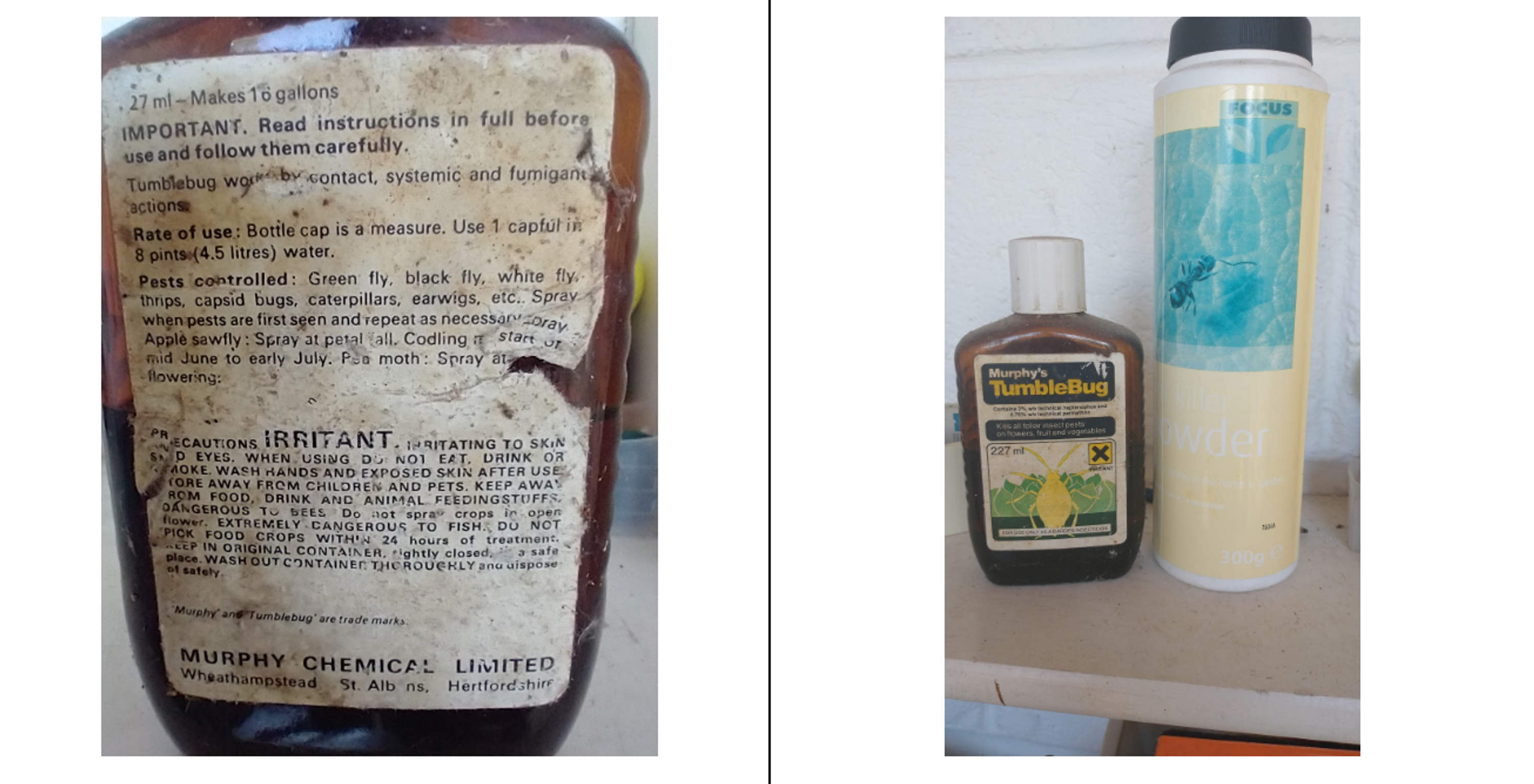Households urged to safely dispose of chemicals driving extinction
Households urged to safely dispose of chemicals driving extinction
.jpg?w=1200&q=45)
What’s lurking on those dusty shelves in the workshop, shed or garage? Cans, brightly coloured spray bottles, with contents that kill? Love the bees? Time then, for the sake of nature on land and in water, to have a clearout. Not down the drain, nor on the patio or garden, but closely follow official guidance on their safe disposal. This includes empty containers too.
Hazardous chemicals - hand them in
Any unused pesticides, including out-of-date or withdrawn substances, must be taken to the local council’s waste and recycling site, where they need to be handed in for safe destruction. Even empty containers contain residues that will kill bugs in sewage works and river life if washed out and rinsed in the sink or via an outside surface water drain. In 2013 all the river life along a ten-mile stretch of the River Kennet was wiped out because someone may have done just that. Even empty containers should be taken to the council dump. Other unused chemicals, such as brake fluid, white spirit and fuel oil, are similarly categorized as hazardous waste.

Know your drains_ - where do they go? Chemicals should not be dumped down any of them._
Weapons of wildlife destruction
Pesticides are substances designed to kill living things, animal or plant as well as life “in between”, such as fungi and lichen. Many of these substances, especially the insecticides, are indiscriminate and will kill or adversely affect many beneficial species, including bees and hoverflies. Moreover, the vast majority of pesticides used on the farm or in the garden are not absorbed by their targets, but end up being dispersed into the wider environment. Others persist in the environment and will accumulate in the soil with regular use. Some if used unwisely, or even sparingly, have proved damaging to human health and accumulate in the food chain. Pesticides considered environmentally ‘safe’ today, may be found unsafe tomorrow. Recent history proves the point - many substances once considered safe, including the infamous DDT and its organochlorine relatives, are now banned in Britain - expect many more to go this way.
Just two years ago, three substances within the group of insecticides called neonicotinoids, types of nerve poison, widely used in gardens and farming to kill greenfly and other aphids, were banned for all outdoor use in the European Union (EU). Not only do the ‘neonics’ kill non-target beneficial insects, but they have been found to act as an appetite suppressant in birds and adversely affect other animals higher up the food chain. Professor Dave Goulson, bee champion and leading scientist on pesticides says, “It only takes four billionths of a gram of imidacloprid to give a lethal dose to a honeybee - just one teaspoon of this substance could kill one and a quarter billion bees, roughly enough to fill four large lorries.” Of all the pesticides that could still be in the shed, these are the ones that must go, now. Look out for labels listing cetamiprid, clothianidin, imidacloprid, nitenpyram, nithiazine, thiacloprid and thiamethoxam - all members of the neonic ‘family. Better still, get rid of anything in that shed that is designed to kill any form of buglife. They are usually indiscriminate.
Check your poison
All pesticides that have been banned in the European Union, are also banned in the UK - find out about the ones on your shelves by checking the EU pesticides database. The RHS also has a regularly updated list of withdrawn chemicals. Horrifyingly though, many of these banned substances, including DDT, remain widely used outside the UK and EU. Some are still approved in the EU for specific purposes, such as using in greenhouses, when biological methods work.
Rodenticides kill
Sadly, there are still numerous cases of pesticides that are illegally used to kill wildlife, including foxes and birds of prey such as Sparrowhawks, Red Kites and the endangered Hen Harrier. Commonly used substances, which will also kill pet dogs, cats and Barn Owls, are the rodenticides that are legitimate to use for killing rats or mice. Careless use can also result in a dead pet, or big vet’s bill. Strong-smelling deterrents and traps are just two of the chemical free alternatives to using rodenticides.

Molly the Collie, still going strong, but only thanks to emergency veterinary treatment costing £250 this June after she ate poison carelessly used to kill mice in the backyard.
Go biological …
Have a hoedown
Pesticides have proved convenient, but this convenience has come at a massive cost to nature and public health, with many untold stories still to come. Harnessing the power of nature is something gardeners can easily embrace. At a larger scale ‘agroecological’ farming methods are also being encouraged. The road to a chemical-free future may be long and winding, but it needs to start now. Dump the chemicals, encourage pest-busting beneficial buglife and have a hoe-down instead of using herbicides.
https://www.facebook.com/shane.collins.3762/videos/10157243420802657
Councillor Shane Collins is leading a Community Hoedown initiative in Mendip District, Somerset, as an alternative to using the glyphosate-based herbicide. (Screenshot from video, link above).

_Aunty’s garage held a few surprises, including some old household pesticides of indeterminate age (Murphy’s Chemicals Limited no longer exists in the UK). TumbleBug contains two banned substances, heptenophos (an _organophosphate) and permethrin.


